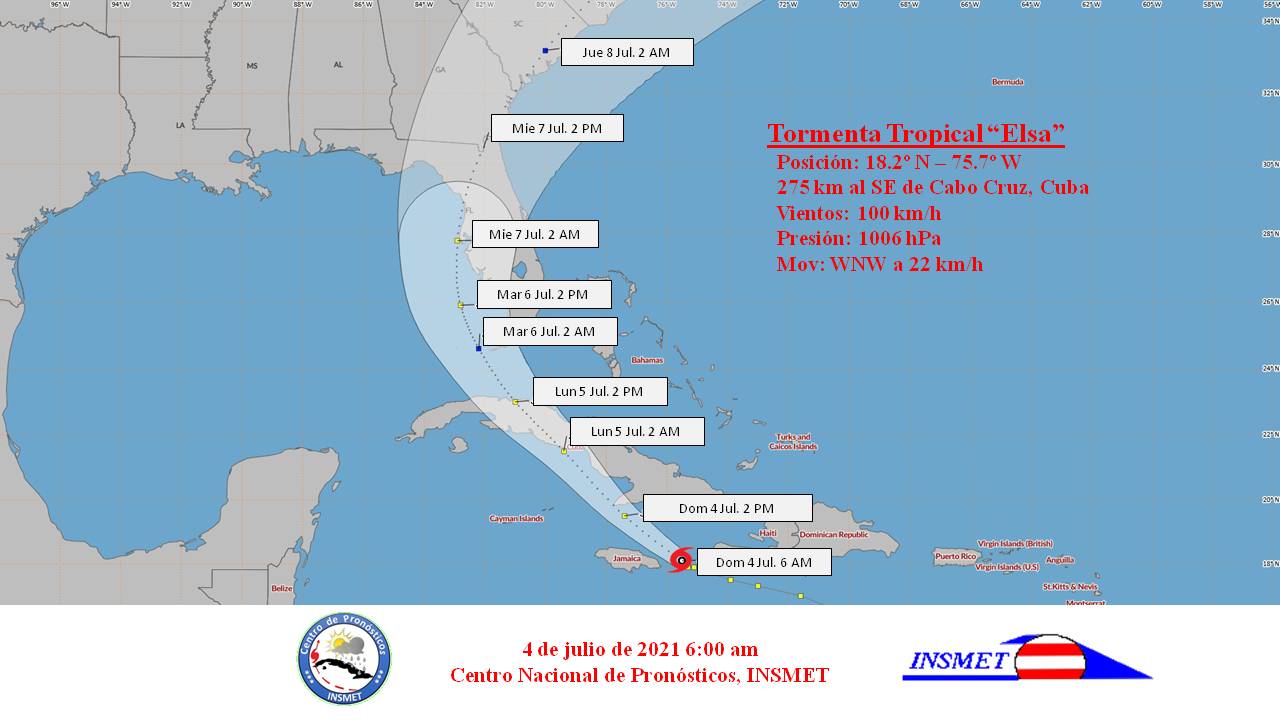
In recent hours, Tropical Storm Elsa has continued to move west-northwest, at 22 kilometers per hour, with little change in organization and intensity. Its central pressure is 1006 hectoPascal and the maximum sustained winds are maintained at 100 kilometers per hour.
During the early morning, a reconnaissance plane found that the Elsa circulation center was reformed a little further to the east, which was corroborated by images from the Cuban meteorological radars of Gran Piedra and Pilón. At six o'clock in the morning, the center of tropical storm Elsa was estimated at 18.2 degrees North latitude and 75.7 degrees West longitude, a position that places it about 275 kilometers southeast of Cape Cruz, Granma.
In the next 12 to 24 hours, Tropical Storm Elsa will continue on a similar course, passing over the Strait of Colón. From the end of the morning of this Sunday, it will be on or very close to the extreme west of Granma and later on the seas to the south of Las Tunas, Camagüey and the provinces of the central region of Cuba. In addition, its speed of translation will continue to decrease gradually, with fluctuations in its intensity.
The bands of cloudy, with drizzles and rains, associated with the circulation of Tropical Storm Elsa, during the last hours have concentrated around its center, with its strongest areas over the seas to the south of the eastern region, however in the next few hours will begin to increase again towards the external circulation of this system, affecting the provinces from Granma to Guantánamo. During the course of the morning, the rains will spread to the rest of the provinces in the eastern region and can be strong and intense in some locations, mainly in the Granma province and in mountainous areas and on the southern coast of Santiago de Cuba and Guantánamo.
During the morning, the intensity of the wind and the height of the waves will begin to increase near the southeastern portion of Cuba. The winds will blow with speeds between 30 and 45 kilometers per hour, with higher gusts that will reach tropical storm force of up to 85 kilometers per hour.
There will be strong swells from Cabo Cruz to Punta de Maisí, with waves between 4 and 6 meters high and from light to moderate coastal flooding, mainly in Santiago de Cuba and Granma. From the end of the morning, the light floods will move to the Gulf of Guacanayabo and later, from the afternoon, to the south coast of the central region of Cuba.
The next tropical cyclone warning will be issued at nine in the morning on Sunday.
